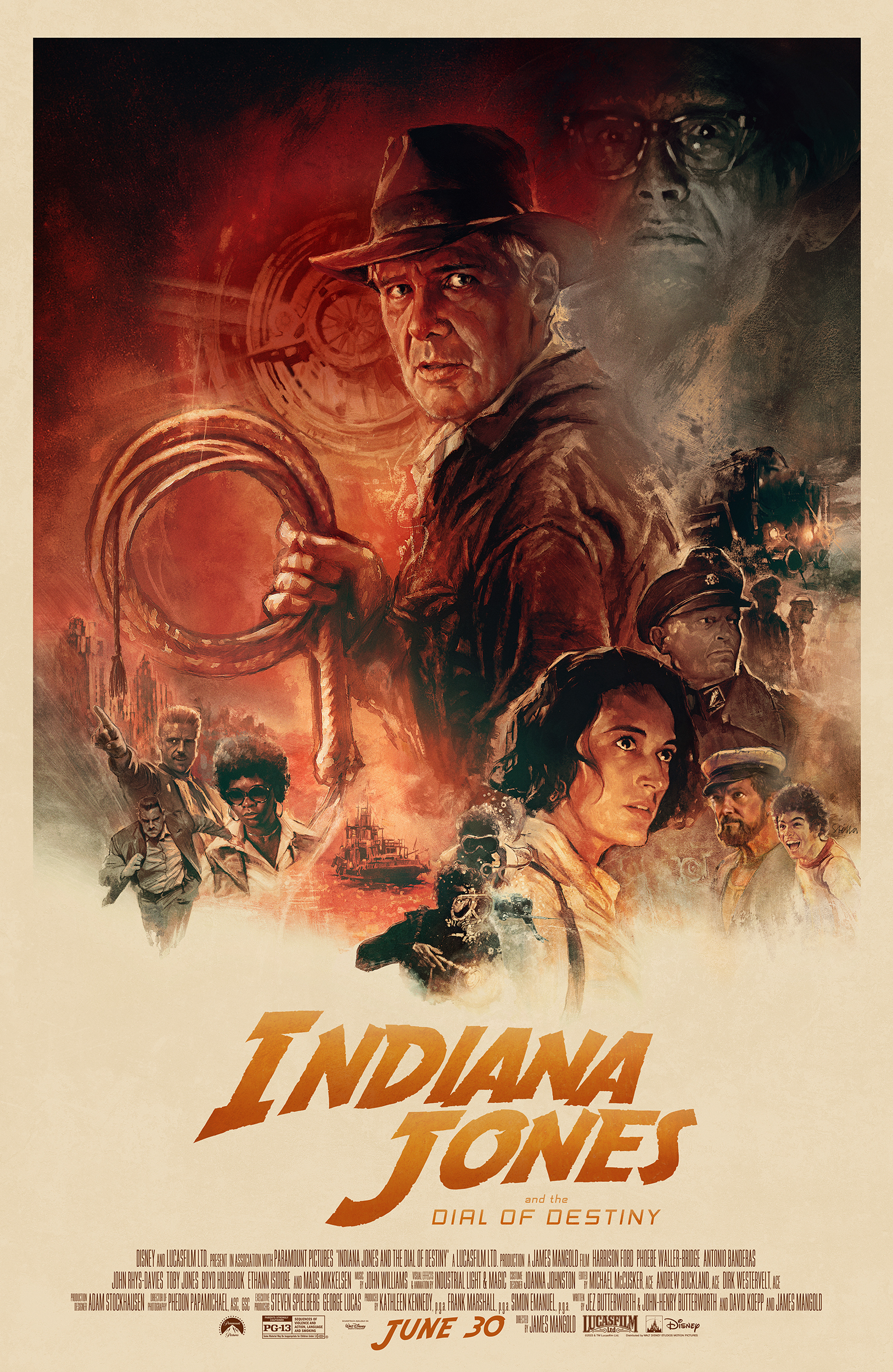Director: James Mangold
Screenwriters: Jez and John-Henry Butterworth, David Koepp, James Mangold
Produced/Distributed by: Lucasfilm, Paramount/Disney
Starring: Harrison Ford, Phoebe Waller-Bridge, Mads Mikkelsen
Why Did I See This Film?
As a lifelong fan of the Indiana Jones series, I had to go see how the titular character’s story was ultimately going to conclude. The film was getting mixed reviews, and I saw opinions ranging from loving it to calling it the worst of the series. I just wanted to see a fun adventure film.
Synopsis:
Struggling to find purpose in a world that has evolved past him, the elderly Indiana Jones (Harrison Ford) is lured by his goddaughter (Phoebe Waller-Bridge) into one final adventure that will set him on a hunt to reassemble a mysterious and powerful dial before an old enemy from his past (Mads Mikkelsen) does so first, both with the intent to right certain wrongs that have haunted them for decades.
Praise:
This is a great final Indiana Jones film. Without delving too deep into the story, it is a fitting character examination of the character of Indiana Jones, similar to director James Mangold’s film Logan. Like that neo-western comic book noir, Dial of Destiny explores the character and his emotions deeper than any of the previous films. Indiana Jones and the Kingdom of the Crystal Skull touched on Indy’s mid-life crisis and feelings of getting old, but this film jumps further to tell a story about an old man stuck in a world that he no longer recognizes. Gone are the pulpy days of clear heroes versus villains, of fortune and glory in a world of possibilities before the dawn of World War 2. Dial of Destiny is set in 1969, where the lines of good and evil are blurred, where the world is interested in the future of the space race, where the US employs former Nazis as scientists in their Apollo program. Seemingly no one is interested in uncovering the mysteries of the past anymore, leaving Indy feeling purposeless.
That is, until Indy’s goddaughter Helena Shaw comes back into his life to recruit him in a hunt for the titular dial, the Antikythera, an artifact that he has past experience with. Helena is out for fame and glory, just as Indy once was, but the old man now sees that as a fool’s errand. However, after a series of unfortunate events, Indy is forced to join her in an adventure that will change both their lives and perspectives forever.
Against them is Voller, a Nazi historian with a personal history with Indy now secretly working as an Apollo scientist, whose obsession with the harnessing the dial’s power sets him and his goons on a destructive race against the heroes around the world. Every character is “stuck in the past,” and holding on to nostalgia, and this final adventure for the dial forces them to come face to face with their destiny.
Finally, it is worth mentioning the masterful score by John Williams, who’s unmistakable contributions to this film solidifies it as one of the best in the franchise.
Comments:
The only issue I had with the film was the use of CGI in certain scenes. The earlier films were known for how much was shot practically and in-camera, but since Indiana Jones and the Kingdom of the Crystal Skull, there has been a larger use of CGI. In small doses, to do touch ups or enhance a visual, it can be fine, but using too much of it can be distracting and take the audience out of the story. I won’t say the CGI is really bad in Indiana Jones and the Dial of Destiny, but there are instances when I could tell certain locations and action scenes were mostly digital. They did not feel as real or tangible as in earlier films.
Then there is the de-aging technology. As shown in the trailers, about 30 minutes of the film takes place during World War 2. Rather than cast a younger actor, Lucasfilm went ahead and used Harrison Ford in these scenes, de-aging him to look in his mid-40s. When looking at him straight on, the effect is quite impressive, and Mangold smartly shoots everything at night so as to mask the technical limitations. However, when the character talks, or is in motion for an extended period, the uncanny-ness starts to appear. I’m not saying the effect is bad or ruins the film, I just think that the technology is not quite there yet. It took me out of the film briefly, but I know some people who did not mind it at all.
Verdict:
I loved it.

Leave a Reply